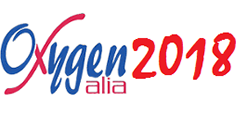The plenary presentations (30 minutes each) of the SAPIENTI SAT medals winners will be presented in the plenary section. The poster session will be held separately.
Conference programme of the IV International Conference Oxygenalia’2018
“In the Oxygen Environment”
1st day (11 October, 2018, Thursday)
| 900-1000 | Opening of the Conference
1. S. Lis – opening information 2. A. Kareiva – conference information 3. Minister of Lithuania Education (or the representative of the Minister) 4. J. Banys – Prezident of Lithuanian Academy of Sciences 5. Rector of Adam Mickiewicz University in Poznań 6. Rector of Vilnius University 7. Director of Polish Institute in Vilnius 8. Awarding medals of SAPIENTI SAT of Jędrzej Śniadecki, Karol Olszewski and Zygmunt Wróblewski Association |
| 1000-1030 | Prof. Jacek Namieśnik, University of Gdańsk, Poland
Oxygen demand – general indication of level of pollution of the waters |
| 1030-1100 | Prof. Virginijus Šikšnys, Vilnius University, Lithuania
The beginning of genome editing |
| 1100-1130 | Coffee break |
| 1130-1200 | Prof. Elżbieta Frąckowiak, Poznań University and Technology, Poland E. Frackowiak, P. Przygocki, P. Ratajczak, F. Béguin
Operando analysis of supercapacitor carbon electrodes oxidation by Electrochemical On-Line Mass Spectrometry |
| 1200-1230 | Prof. Bronisław Marciniak, Adam Mickiewicz University in Poznań, Poland
Photo- and radiation-induced oxidation of methionine containing peptides. From model compounds to real bio-systems |
| 1230-1300 | Prof. Edvardas Danila, Vilnius University, Lithuania
Role of the lungs in oxygenation of the human body |
| 1300-1330 | Prof. Victor Lavin, Universidad de La Laguna, Spain
Role of the oxygen ions on the thermal sensitivity of erbium(III) luminescence in optical temperature sensors |
| 1330-1500 | Lunch |
| 1500-1530 | Prof. Wiesław Stręk, Institute of Low Temperature and Structure Research,
Polish Academy of Sciences, Wrocław, Poland W. Strek, A. Łukowiak, I.Y. Gerasimchuk, I. Elkin+, W. Drulis, A. Hackemer Enhanced solubility of oxygen in subcritical water |
| 1530-1600 | Prof. Robert Mokrik, Vilnius University, Lithuania
Oxygen isotope evolution of the Baltic Artesian Basin groundwater |
| 1600-1630 | Prof. Sandro Marroni, DAN Europe
Oxygen and EPO: what we can learn from diving |
| 1630-1700 | Prof. Arūnas Ramanavičius, Vilnius University, Lithuania
Sustainable energetics based on the application of biofuel cells |
| 1700-1730 | Prof. Miki Hasegawa, Aoyama Gakuin University, Japan
Lanthanide luminescent compounds with organic modification towards oxygen sensors |
| 1730-1800 | Dr. Tanel Tatte, University of Tartu, Estonia
Preparation of metal oxide gel-fibres versus hollow fibres (microtubes) |
| 1900 | Gala dinner (Vilnius Center) |
2nd day (12 October, 2018, Friday)
| 900-1000 | Prof. Marek Samoć, Wrocław University of Science and Technology, Poland Nonlinear optics and applications of the reactive oxygen species |
| 930-1000 | Prof. Feliksas Jankevičius, Vilnius University, Lithuania
A new generation of prostate cancer markers |
| 1000-1030 | Prof. Andrzej Mackiewicz, Poznań University of Medical Sciences, Poland
Oxygen and Cancer: Friends or Foes |
| 1030-1100 | Prof. Egidijus Rimkus, Vilnius University, Lithuania
Climate change: global and regional issues |
| 1100-1130 | Coffee break |
| 1130-1200 | Prof. Aleksandra Lobnik, University of Maribor, Slovenia
Oxygen optical sensors |
| 1200-1230 | Prof. Janusz Gadzinowski, Poznań University of Medical Sciences, Poland
Oxygen and it’s compounds in the treatment of the neonates |
| 1230-1300 | Prof. Antoine Barbier, IRAMIS, French National Atomic Energy Commission, France
Atomic oxygen assisted epitaxial BaTiO3 (001) thin films based artificial multiferroic heterostructures |
| 1300-1330 | Prof. Adam Gadomski, UTP University of Science and Technology, Poland
How (per)oxidation may spoil lubrication in natural human locomotion systems |
| 1330-1500 | Lunch |
| 1500-1530 | Prof. Kris Kempa, Department of Physics Faculty, Boston College, USA
Doped metal oxides as plasmonic transparent metals, and their applications |
| 1530-1600 | Prof. Chicgoua Noubactep, University of Göttingen, Garmany
Importance of dissolved oxygen in designing Fe0-based systems for safe drinking water |
| 1600-1630 | Prof. Jacek Kot, Medical University of Gdańsk, Poland
Oxygen as a drug: uses & misuses |
| 1630-1700 | Prof. Juergen Meyer, Tuebingen University, Germany
Inorganic photosensitizers for singlet oxygen generation |
| 1700-1730 | Prof. Wojciech Macyk, Jagiellonian University in Kraków, Poland
Metal oxides in photocatalysis – opportunities and limitations |
| 1730-1800 | Dr. Robertas Badaras, Vilnius University, Lithuania
Oxygen application in poisoning treatment |
| 1800-1900 | Poster session (awards) |
3rd day (13 October, 2018, Saturday)
| 800-1330 | Belarus (Horodniki) or Trakai/Vilnius excursions |
| 1330-1500 | Lunch |
| 1500-1530 | Prof. Grażyna Stochel, Jagiellonian University in Kraków, Poland
Small molecules in bioinorganic redox control. Towards understanding and application perspectives |
| 1530-1600 | Prof. Michael Giersig, Freie University Berlin, Germany
The application of nanoparticles in medicine |
| 1600-1630 | Prof. Magdalena Król, Warsaw University of Life Sciences, SGGW, Poland
“Trojan horse” approach in cancer treatment |
| 1630-1700 | Dr. Donatas Kaminskas, Vilnius University, Lithuania
Dr. Donatas Kaminskas, Dr. Andrej Spiridonov Application of stable oxygen 16 and 18 ratio as a paleothermometer for Lithuanium Silurian rocks studies |
| 1700-1730 | Closing ceremony (Occasional Medals of the 250 anniversary of the birth of Jedrzej Sniadecki, music recital) |

1 Comment